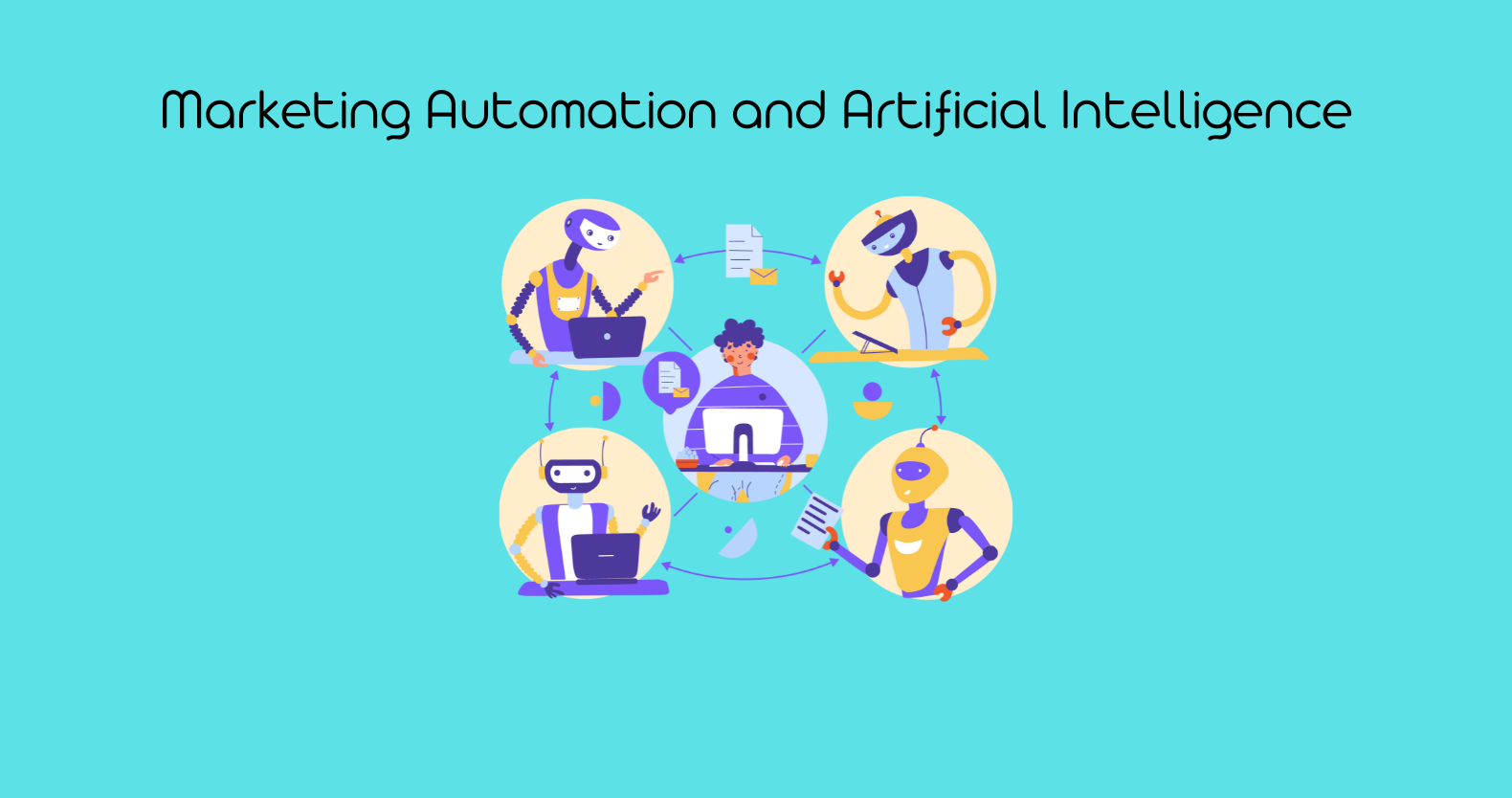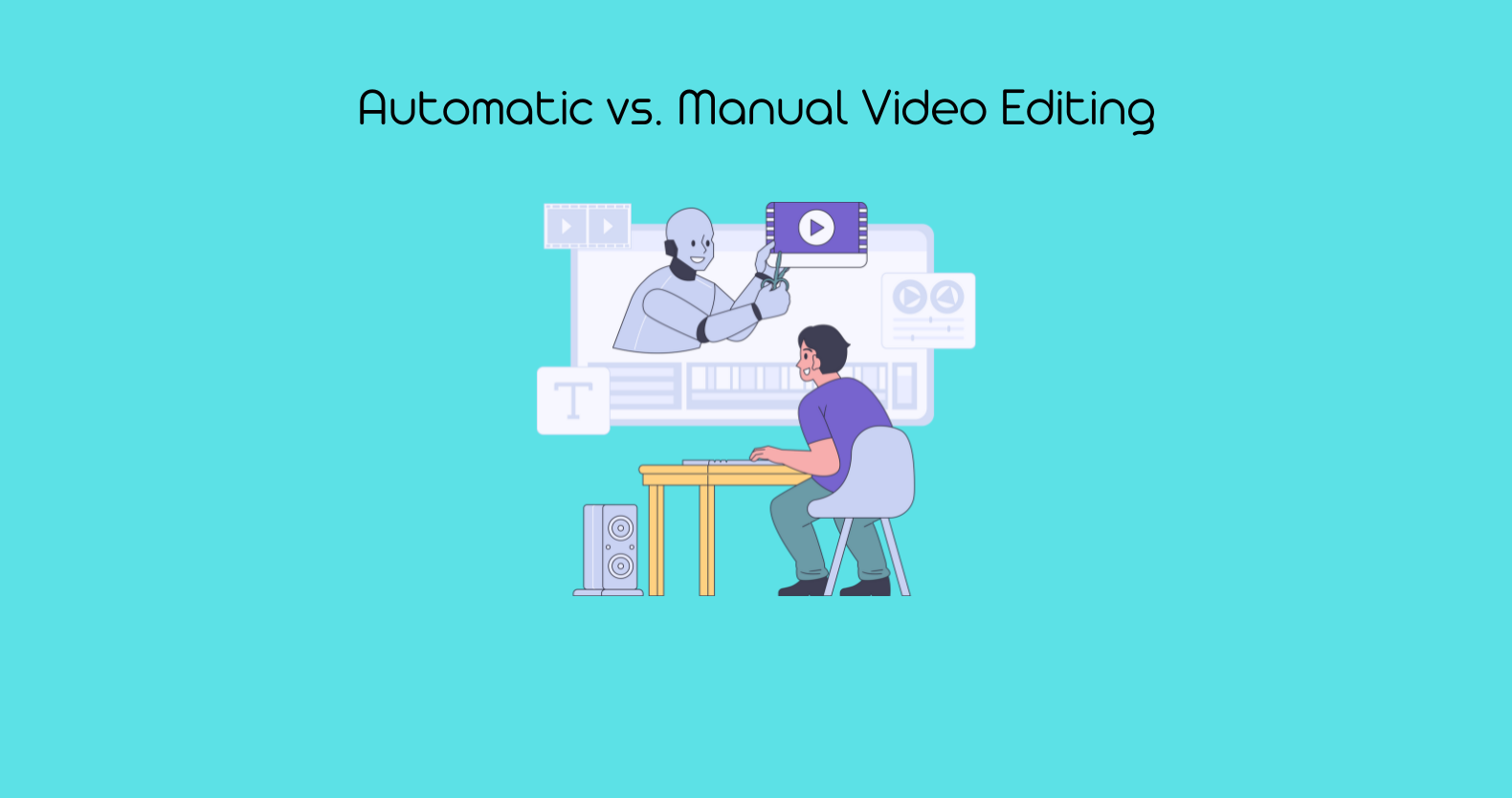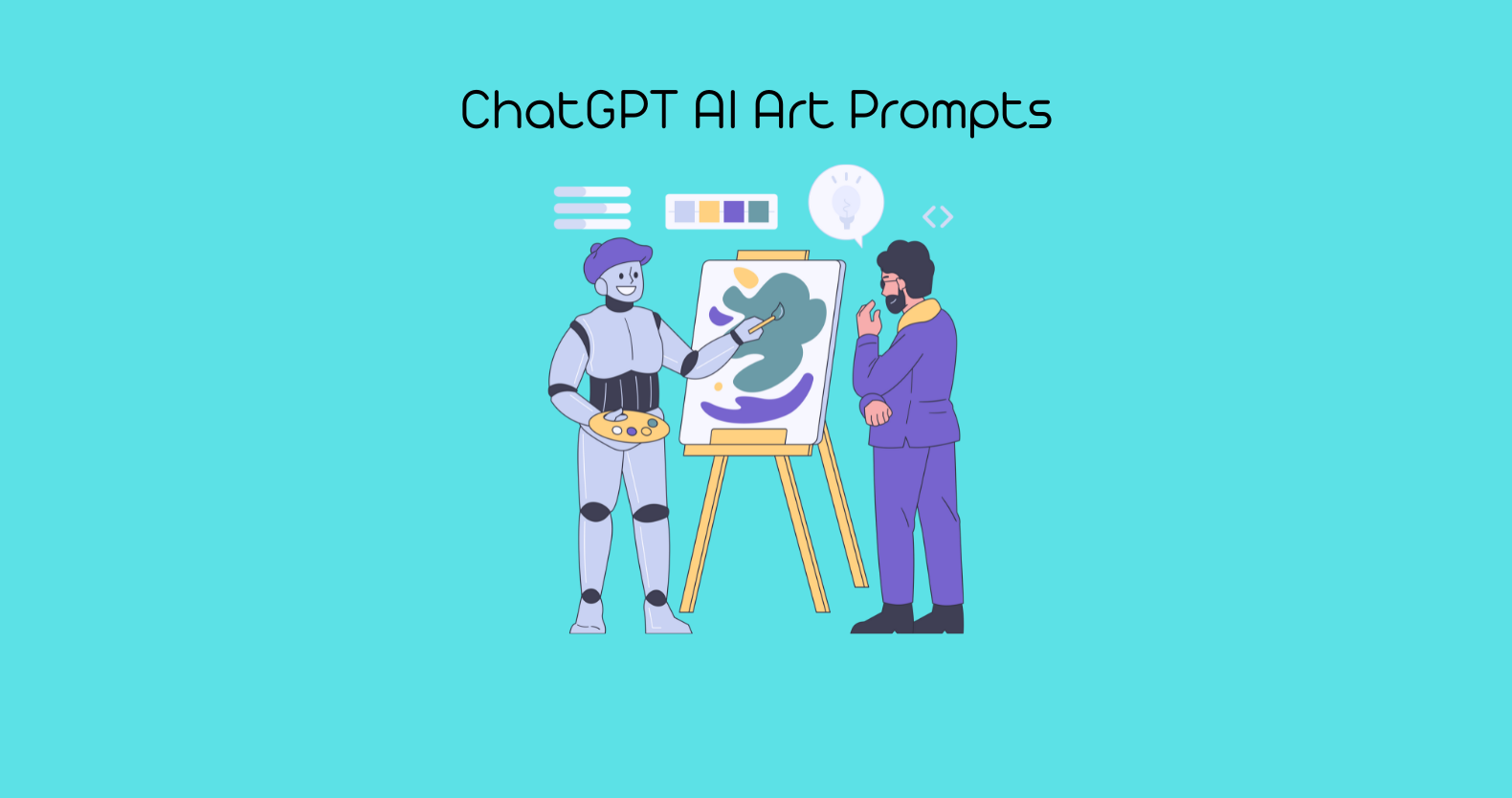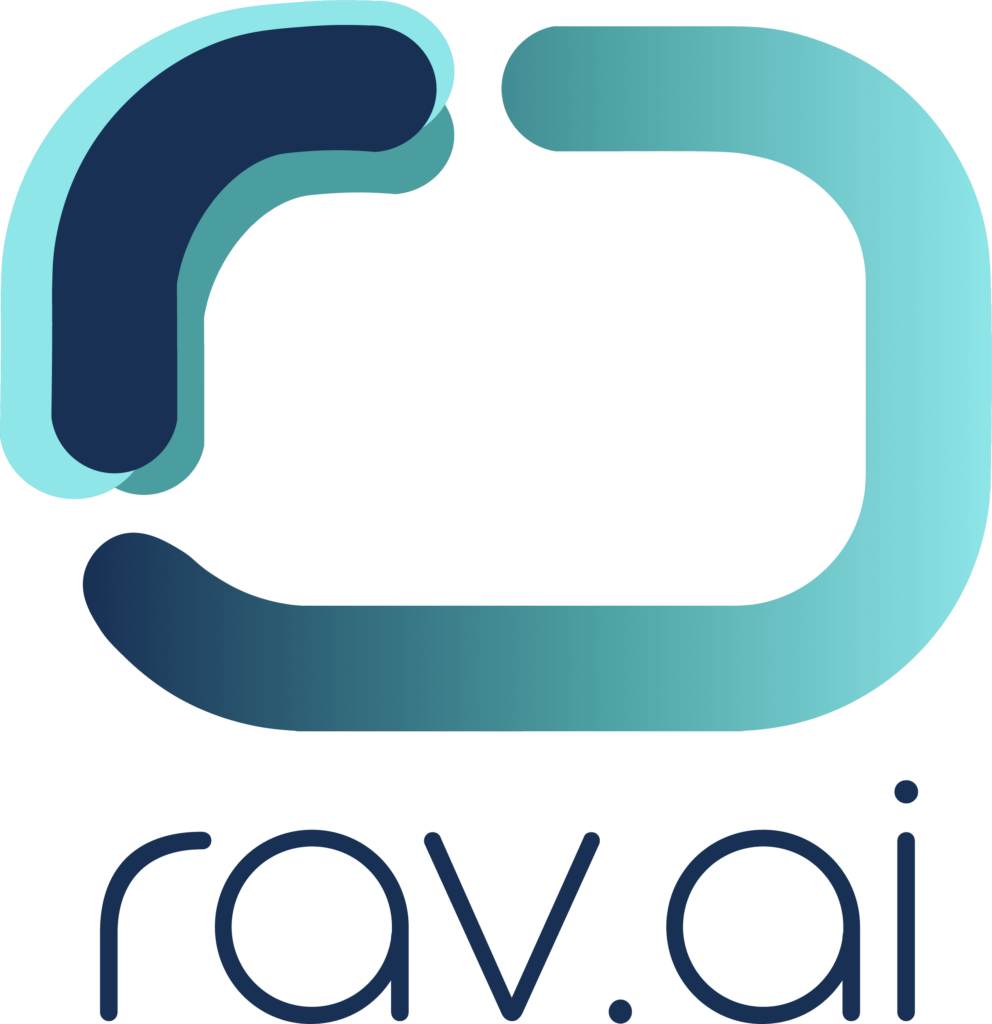Table Of Content
What is Marketing Automation?
Marketing Automation – Its Importance
1. Streamlines Marketing Processes
2. Enhances Customer Engagement
3. Improves Lead Nurturing and Conversion
4. Provides Data-Driven Insights
5. Increases Marketing ROI
How Is Generative AI Changing The Dynamics Of Various Businesses?
1. Revolutionizing Content Creation
2. Enhancing Customer Experience
3. Driving Innovation in Product Design
4. Streamlining Manufacturing Processes
5. Transforming Marketing Strategies
6. Redefining Financial Services
7. Improving Supply Chain Management
8. Advancing Healthcare Solutions
9. Supporting Environmental Sustainability
10. Facilitating Remote Work and Collaboration
How AI Has Revolutionized The Content Creation Process?
1. Voice and Video Content Creation
2. Automated Content Generation
3. Personalized Content Recommendations
4. Enhanced Content Editing and Proofreading
5. SEO Optimization
6. Visual Content Creation
7. Content Curation
8. AI-Generated Visual Art
9. Content Analytics
10. Augmented Reality (AR) and Virtual Reality (VR) Content
Artificial Intelligence and Video Editing
1. Rav.ai
2. Magisto
3. Adobe Premiere Pro (with Adobe Sensei)
4. Lumen5
5. InVideo
Final Thoughts!
In today’s fast-paced digital world, businesses must keep up with the latest technologies to stay competitive. One of the most transformative trends is the rise of marketing automation. This powerful tool allows companies to streamline their marketing efforts, saving time and resources while boosting efficiency.
In this guide, we’ll explore the importance of marketing automation, delve into how generative AI is reshaping various industries, and discuss the revolutionary impact AI has on content creation.
We’ll also examine the role of artificial intelligence in video editing, showing how these advancements are changing the way we produce and consume content.
What is Marketing Automation?
Marketing automation refers to the use of software and technologies to streamline, automate, and measure marketing tasks and workflows. This process allows businesses to effectively target customers with personalized marketing messages across various channels, such as email, social media, and websites, without the need for manual intervention.
One of the key benefits of marketing automation is its ability to segment audiences and deliver tailored content to different customer groups. By tracking customer behaviors and preferences, businesses can send relevant messages that are more likely to convert leads into sales. Additionally, marketing automation tools often include features for lead nurturing, scoring, and campaign management, which help marketers prioritize efforts and focus on high-potential leads.
In essence, marketing automation enhances efficiency by reducing repetitive tasks and ensuring consistent communication with potential and existing customers. This not only saves time but also improves the overall customer experience, leading to higher engagement and better business results. As businesses increasingly adopt digital strategies, marketing automation has become an essential tool for staying competitive in today’s fast-paced market.
Marketing Automation – Its Importance
1. Streamlines Marketing Processes
Marketing automation significantly streamlines marketing processes by automating repetitive tasks, such as sending emails, posting on social media, and managing campaigns. This automation frees up time for marketers, allowing them to focus on strategic planning and creative activities.
With marketing automation, businesses can schedule campaigns in advance and ensure they are delivered at optimal times, leading to better customer engagement. Moreover, it eliminates the risk of human error in tasks like data entry and segmentation, ensuring that campaigns run smoothly.
So, by automating these processes, businesses can achieve greater efficiency and consistency in their marketing efforts, leading to improved results and higher return on investment (ROI).
2. Enhances Customer Engagement
Marketing automation plays a crucial role in enhancing customer engagement by delivering personalized content to the right audience at the right time. It allows businesses to segment their audience based on various criteria, such as behavior, preferences, and demographics, and then tailor their messages accordingly.
Automated workflows can trigger emails, social media posts, or advertisements based on specific customer actions, creating a more personalized experience.
This level of personalization increases the likelihood of engagement, as customers receive content that is relevant to their interests and needs. As a result, businesses can build stronger relationships with their customers, leading to increased loyalty and retention.
3. Improves Lead Nurturing and Conversion
One of the key benefits of marketing automation is its ability to improve lead nurturing and conversion rates. By tracking and analyzing customer behavior, automation tools can identify where prospects are in the sales funnel and deliver targeted content that guides them through the buyer’s journey.
For instance, automated emails can be sent to prospects who have shown interest in a product but have not yet made a purchase, providing them with additional information or special offers to encourage conversion. This targeted approach helps to move leads through the funnel more efficiently, increasing the likelihood of conversion and ultimately driving sales.
4. Provides Data-Driven Insights
Marketing automation tools provide valuable data-driven insights that can help businesses make informed decisions about their marketing strategies. These tools track and analyze customer interactions, campaign performance, and other key metrics, offering a comprehensive view of what is working and what needs improvement.
With this data, marketers can identify trends, measure ROI, and optimize their campaigns for better results. Additionally, automation tools often include A/B testing features that allow businesses to experiment with different content, subject lines, and timing to determine the most effective approach. By leveraging these insights, businesses can continuously refine their marketing efforts and achieve better outcomes.
5. Increases Marketing ROI
Marketing automation increases marketing ROI by optimizing resources and improving the effectiveness of campaigns. By automating tasks and processes, businesses can reduce the need for manual labor, resulting in cost savings.
Additionally, automation ensures that campaigns are executed efficiently and with minimal errors, leading to higher conversion rates and greater revenue. The ability to deliver personalized content and targeted messages also contributes to higher engagement and customer satisfaction, which in turn drives sales.
Furthermore, the data-driven insights provided by automation tools enable businesses to make more strategic decisions, further enhancing ROI. In summary, marketing automation helps businesses achieve more with less, making it a valuable investment for long-term growth.
How Is Generative AI changing The Dynamics Of Various Businesses?
1. Revolutionizing Content Creation
Generative AI is transforming content creation by enabling businesses to produce high-quality content at scale. AI-powered tools can generate blog posts, social media updates, and even video scripts with minimal human intervention.
This capability allows businesses to maintain a consistent content pipeline, which is essential for engaging audiences in today’s fast-paced digital environment.
With the help of AI, companies can tailor content to specific audiences by analyzing data and generating content that resonates with different demographic groups. This leads to more personalized marketing strategies, improved customer engagement, and increased conversion rates.
2. Enhancing Customer Experience
Businesses are leveraging generative AI to improve customer experiences by providing more personalized and efficient services. AI-driven chatbots and virtual assistants can handle customer queries in real time, offering personalized solutions based on customer data.
These AI systems learn from each interaction, becoming more effective over time. By automating customer support, businesses can reduce response times, improve customer satisfaction, and free up human agents to focus on more complex tasks.
Additionally, AI can analyze customer feedback to identify trends and areas for improvement, allowing businesses to continuously refine their services.
3. Driving Innovation in Product Design
Generative AI is also being used to innovate product design by exploring new possibilities that may not be immediately obvious to human designers. AI can analyze vast amounts of data, including customer preferences, market trends, and material properties, to suggest novel designs that meet specific criteria.
This technology enables businesses to create products that are not only functional but also aesthetically pleasing and tailored to the needs of their target audience. Companies in industries such as fashion, automotive, and consumer electronics are already using AI to develop cutting-edge products that set them apart from the competition.
4. Streamlining Manufacturing Processes
In manufacturing, generative AI is optimizing processes by improving efficiency and reducing waste. AI algorithms can analyze production data to identify inefficiencies and suggest improvements in real-time.
For example, AI can optimize supply chain management by predicting demand and adjusting production schedules accordingly. Additionally, generative AI can be used in predictive maintenance, where it analyzes data from machinery to predict when maintenance is needed, reducing downtime and extending the lifespan of equipment. These advancements lead to cost savings, increased productivity, and a more sustainable manufacturing process.
5. Transforming Marketing Strategies
Generative AI is reshaping marketing by enabling more targeted and personalized campaigns. AI can analyze consumer behavior, preferences, and trends to generate marketing content that resonates with specific audiences. This level of personalization leads to higher engagement and conversion rates. AI can also automate the distribution of content across multiple channels, ensuring that the right message reaches the right audience at the right time. Moreover, AI-powered analytics provide insights into campaign performance, allowing marketers to refine their strategies and achieve better results with less effort.
6. Redefining Financial Services
The financial services industry is experiencing a shift thanks to generative AI, which is being used to enhance decision-making, risk assessment, and fraud detection. AI can analyze large datasets to identify patterns and anomalies that may indicate fraudulent activity, enabling quicker and more accurate detection.
In addition, AI-driven algorithms are being used to personalize financial advice, helping customers make informed decisions about investments, savings, and insurance. These advancements lead to a more secure and efficient financial system, with improved customer experiences and reduced operational costs.
7. Improving Supply Chain Management
Generative AI is revolutionizing supply chain management by enhancing the efficiency and responsiveness of logistics networks. AI can predict demand more accurately, optimize inventory levels, and streamline distribution processes.
For example, AI can analyze weather patterns, market trends, and transportation data to predict potential disruptions and suggest alternative routes or suppliers.
This level of insight allows businesses to mitigate risks, reduce costs, and ensure that products are delivered on time. Additionally, AI-driven automation can handle routine tasks such as order processing and inventory tracking, freeing up human resources for more strategic activities.
8. Advancing Healthcare Solutions
In healthcare, generative AI is being used to develop new treatments, improve diagnostics, and enhance patient care. AI can analyze medical data to identify patterns that may indicate the presence of disease, allowing for earlier and more accurate diagnoses.
Additionally, AI-driven drug discovery is accelerating the development of new medications by predicting how different compounds will interact with the human body. In patient care, AI-powered virtual assistants can monitor patients, provide reminders for medication, and offer personalized health advice.
These innovations lead to better patient outcomes, reduced healthcare costs, and more efficient use of medical resources.
9. Supporting Environmental Sustainability
Generative AI is playing a crucial role in supporting environmental sustainability by helping businesses reduce their carbon footprint and optimize resource use. AI can analyze data from various sources, such as satellite imagery and IoT sensors, to monitor environmental conditions and predict changes.
This information can be used to develop strategies for reducing energy consumption, managing natural resources, and mitigating the impact of climate change. For example, AI can optimize energy usage in buildings by adjusting heating and cooling systems based on occupancy patterns and weather forecasts.
These advancements contribute to a more sustainable future by promoting efficient resource management and reducing environmental impact.
10. Facilitating Remote Work and Collaboration
Generative AI is facilitating remote work and collaboration by providing tools that enhance productivity and communication. AI-powered platforms can automate routine tasks, such as scheduling meetings, managing emails, and organizing documents, allowing remote teams to focus on more strategic work.
Furthermore, AI can analyze team interactions and suggest improvements in communication and workflow, leading to more efficient collaboration. Virtual meeting tools powered by AI can enhance video and audio quality, provide real-time translations, and even summarize discussions. These advancements make remote work more seamless and effective, enabling businesses to adapt to the changing work environment.
How AI Has Revolutionized The Content Creation Process?
1. Automated Content Generation
AI-powered tools have made it possible to automate the creation of written content. These tools can generate articles, blog posts, and even social media updates within seconds. By analyzing large datasets, AI can identify trending topics, relevant keywords, and optimal content structure.
This allows businesses to produce content at scale, reducing the time and resources needed for manual writing. AI-generated content can be tailored to specific audiences, ensuring relevance and engagement. This automation not only boosts productivity but also enables content creators to focus on more strategic aspects of content development.
2. Personalized Content Recommendations
AI has significantly enhanced the ability to deliver personalized content to users. By analyzing user behavior, preferences, and interaction history, AI algorithms can recommend content that is most likely to engage individual users. This personalized approach increases user satisfaction and retention.
For example, streaming services like Netflix and music platforms like Spotify use AI to suggest movies and songs based on past preferences. Similarly, e-commerce websites employ AI to recommend products that align with a user’s interests. This level of personalization drives higher engagement rates and improves the overall user experience.
3. Enhanced Content Editing and Proofreading
AI tools like Grammarly and Hemingway Editor have revolutionized the editing and proofreading process.
These tools analyze content for grammar, punctuation, style, and readability, offering real-time suggestions for improvement. AI-driven editing tools can identify errors that may be overlooked by human editors and provide consistency across all content. Additionally, AI can adapt to a writer’s style over time, offering personalized feedback that enhances the quality of the content.
This ensures that content is polished, professional, and aligned with the brand’s voice, saving time and reducing the need for multiple rounds of editing.
4. SEO Optimization
Search Engine Optimization (SEO) is crucial for content visibility, and AI has greatly improved the SEO process. AI tools like Clearscope and MarketMuse analyze top-performing content and provide insights into keyword usage, content structure, and user intent.
These tools help content creators optimize their work to rank higher on search engine results pages (SERPs). AI can also predict changes in search algorithms, allowing creators to stay ahead of the curve. By integrating AI into SEO strategies, businesses can ensure that their content reaches the right audience, drives organic traffic, and achieves better search engine rankings.
5. Visual Content Creation
AI is not limited to text; it has also transformed the creation of visual content. AI-powered tools like Canva and Adobe Sensei enable users to design high-quality graphics, videos, and animations with minimal effort. These tools offer templates, automatic image enhancements, and even video editing features that make the content creation process accessible to non-designers.
AI can also generate custom visuals based on specific criteria, ensuring that the content aligns with brand guidelines and resonates with the target audience. This democratization of design tools has empowered businesses of all sizes to produce professional-grade visual content.
6. Content Curation
Content curation is an essential part of content marketing, and AI has made this process more efficient. AI algorithms can sift through vast amounts of content on the internet to identify and curate relevant articles, videos, and social media posts. This curated content can then be shared with audiences, keeping them engaged and informed.
AI-driven content curation tools like Feedly and Curata can learn from user preferences and refine their recommendations over time. By automating content curation, businesses can maintain a consistent online presence and provide value to their audience without the manual effort.
7. AI-Generated Visual Art
Generative Adversarial Networks (GANs) and other AI technologies have opened new possibilities in visual art creation. Artists and designers use AI to generate unique artwork, illustrations, and even fashion designs. AI can create art that blends different styles, mimics famous artists, or produces entirely new forms of expression.
This has led to the emergence of AI artists and a new genre of digital art that challenges traditional concepts of creativity. AI-generated art is not only used in galleries but also in marketing campaigns, product design, and branding, adding a new dimension to visual storytelling.
8. Voice and Video Content Creation
AI has also made strides in voice and video content creation. AI-powered platforms like Synthesia and Descript allow creators to generate video content with AI-generated voiceovers or deepfake technology.
These tools can create videos that feature virtual actors, eliminating the need for expensive production studios and on-camera talent. AI can also generate scripts, synchronize voiceovers with video, and even translate content into multiple languages. This has democratized video content creation, enabling businesses and individuals to produce professional-grade videos for marketing, training, and communication purposes.
9. Content Analytics
AI-driven content analytics tools provide valuable insights into how content performs and how it can be improved. Platforms like Google Analytics and HubSpot use AI to analyze metrics such as engagement, conversion rates, and audience demographics. These insights help content creators understand what resonates with their audience and make data-driven decisions to enhance future content.
AI can also predict content trends and recommend topics that are likely to attract attention. By leveraging AI in content analytics, businesses can optimize their content strategy, improve ROI, and achieve better results from their content marketing efforts.
10. Augmented Reality (AR) and Virtual Reality (VR) Content
AI has also impacted the creation of AR and VR content, which is becoming increasingly popular in marketing and entertainment. AI can generate immersive experiences that blend the digital and physical worlds, offering users a new way to interact with content.
For example, AI can create virtual try-ons for fashion brands, interactive 3D models for real estate, or immersive training simulations for employees. These technologies are transforming how businesses engage with their customers and create memorable experiences that go beyond traditional content formats.
Artificial Intelligence and Video Editing
Artificial intelligence (AI) has significantly transformed the video editing landscape by automating tasks that once required extensive manual effort. AI tools can analyze footage, select the best clips, and even edit videos according to predefined styles or preferences, drastically reducing editing time.
They also enhance creativity by offering features like automatic color correction, motion tracking, and audio enhancement, making professional-quality video production accessible to everyone. This has enabled creators to focus more on storytelling and less on the technical aspects of editing, thereby increasing productivity and output quality.
1. Rav.ai
Rav.ai is a cutting-edge AI-powered video editing solution designed to streamline the editing process for creators, influencers, and businesses. With Rav.ai, users can upload their video clips and a sample video to guide the editing process. The platform then automatically edits the uploaded footage to match the style and tone of the sample, delivering a polished final product in minutes.
This is particularly useful for those who produce content regularly and need consistent quality without spending hours on editing. Rav.ai also offers direct uploading to social media platforms, making it a comprehensive tool for content creators.
T’s AI-driven approach saves time, reduces costs, and simplifies the video editing process, allowing users to focus on creating engaging content rather than getting bogged down by the technicalities of editing.
2. Magisto
Magisto is another powerful AI-driven video editing tool that has gained popularity among content creators. It uses AI to analyze raw footage and automatically edit it into a professional-looking video. The platform identifies key moments in the footage, adds transitions, effects, and music, and produces a video that aligns with the user’s desired style.
Magisto is particularly useful for marketers and small businesses looking to create engaging promotional videos without the need for advanced editing skills. The platform’s AI can even suggest improvements based on audience engagement metrics, making it a valuable tool for optimizing video content for specific target audiences.
3. Adobe Premiere Pro (with Adobe Sensei)
Adobe Premiere Pro is a well-known video editing software that has integrated AI capabilities through Adobe Sensei. This AI engine enhances various aspects of video editing, including auto-reframing, which automatically adjusts aspect ratios to fit different platforms.
Adobe Sensei also offers features like color matching and scene editing, which analyze the content and make real-time adjustments to ensure consistency and quality across all clips. For professional editors, Adobe Premiere Pro provides a balance between manual control and AI-powered automation, allowing for both detailed customization and efficiency in the editing process.
4. Lumen5
Lumen5 is an AI-powered video creation tool designed specifically for converting blog posts and articles into engaging video content. The platform uses AI to analyze written content, select key points, and transform them into a visual format with text overlays, images, and music.
Lumen5 is particularly useful for content marketers and bloggers who want to repurpose their written content for social media or other video platforms.
The AI handles most of the heavy lifting, allowing users to produce videos quickly without needing extensive editing knowledge. This makes Lumen5 a great tool for increasing the reach and impact of existing content through video.
5. InVideo
InVideo is another AI-powered video editing platform that caters to both beginners and professionals. It offers a vast library of templates, stock footage, and music, making it easy to create high-quality videos.
The AI in InVideo helps by providing smart suggestions for templates and effects based on the content being edited. It also features text-to-video capabilities, where AI can turn written scripts into videos with minimal user input. InVideo’s intuitive interface, combined with AI-powered automation, makes it an excellent choice for those looking to create marketing videos, social media content, or even personal projects quickly and efficiently.
Final Thoughts!
Artificial intelligence (AI) is rapidly changing various industries, and video editing is no exception. Through AI, video editing has become more accessible, efficient, and creative. This transformation has not only empowered professional editors but also made it possible for individuals with no prior experience to create high-quality content.
The five AI-powered video editing solutions discussed, including Rav.ai, Magisto, Adobe Premiere Pro with Adobe Sensei, Lumen5, and InVideo, each offer unique features tailored to different needs. Rav.ai stands out with its ability to automate the entire editing process, making it ideal for those who need to produce content quickly and efficiently.
Magisto and Lumen5 excel in transforming raw footage and written content into engaging videos with minimal user input, perfect for marketers and small businesses.
Adobe Premiere Pro, with its AI-driven enhancements, offers a blend of manual control and automation, making it a top choice for professionals. InVideo provides a user-friendly platform with smart AI suggestions, ideal for both beginners and seasoned creators.
AI is making video editing more efficient and accessible, enabling everyone to create high-quality videos with ease. Whether you are a professional editor, a small business owner, or a content creator, these AI-powered tools can help you achieve your video production goals in 2024.








